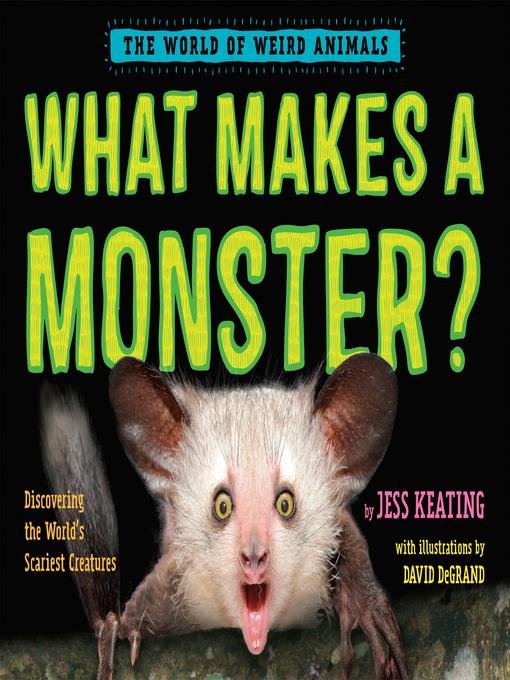
What Makes a Monster?
Discovering the World's Scariest Creatures
فرمت کتاب
ebook
تاریخ انتشار
2017
Lexile Score
1030
Reading Level
5-8
ATOS
6.4
Interest Level
K-3(LG)
نویسنده
Jess Keatingشابک
9780553512328
کتاب های مرتبط
- اطلاعات
- نقد و بررسی
- دیدگاه کاربران
نقد و بررسی

July 10, 2017
Keating, whose Pink Is for Blobfish celebrated rosy-hued creatures, introduces more than a dozen animals (and one fungus) that have the makings of real-life monsters. With such names as the horror frog, assassin bug, and goblin shark—all shown in dramatic photographs—it’s no wonder their reputations aren’t stellar. Even a few cute animals have unsavory habits: “Along with carrying deadly diseases, female prairie dogs are known to commit infanticide, killing babies of other prairie dog mothers.” Amid the gory details, Keating clearly emphasizes how survival instincts drive behaviors while providing a solid overview of each creature’s biological background. The inclusion of humans in the final entry adds another thought-provoking layer to the question posed by the title. Ages 6–9. Author’s agent: Kathleen Rushall, Andrea Brown Literary.

May 15, 2017
An invitation to consider the title question through descriptions of 17 animals with monstrous features or habits.Keating and DeGrand follow up Pink Is for Blobfish (2016) with another collection from the world of weird animals. Here they look at a wide variety of species, including human beings. Examples stretch broadly across the animal kingdom, even including brain-controlling fungi and the animal cooperative that makes up the organism known as the Portuguese man-of-war. Not all are obviously scary; the "sweet little prairie dog" is included as its fleas can carry bubonic plague. Each example is presented on a garishly colored double-page spread and illustrated with both a photograph and a cartoon. In the case of the secretive aye-aye, the images obscure or mis-illustrate its most salient feature, the elongated, rotator-jointed and claw-tipped middle finger on both "hands" that allows the aye-aye to probe inside a tree for grubs. Each spread offers a headline, one paragraph of description, a second with a curious fact, and a sidebar with proper and Latin names, size, diet, habitat, and predators and threats. A final spread connects famous monsters with some of these creatures but also asks readers to consider what they find frightening, whether the animal's monstrous trait helps its survival, and whether they see human similarities. Lurid design detracts from the helpful message that even ugly, scary animals deserve protection. (glossary) (Nonfiction. 7-10)
COPYRIGHT(2017) Kirkus Reviews, ALL RIGHTS RESERVED.

July 1, 2017
Gr 1-4-Keating and DeGrand (Pink Is for Blobfish) have teamed up again to deliver more wacky animal facts. This time around, Keating warns readers about 17 monsters with cautionary advice ranging from "don't dine with the vampire bat" to "look out for the Humboldt squid." The creatures include the death stalker scorpion, with its predatory pincers and stinging tail, and the Komodo dragon, with its toxic proteins. The final creature is man. Bright photos and bold cartoon illustrations make the scary beasts seem less intimidating. On each spread, two paragraphs explain why the animal is so threatening, and a sidebar highlights general information. Readers are invited to see how creatures from the book compare with famous monsters and to decide for themselves what qualifies as monstrous. VERDICT A great addition for collections where horror and animal fans dominate.-Emily Bayci, Naperville Public Library-Naper Boulevard Library, IL
Copyright 2017 School Library Journal, LLC Used with permission.

























دیدگاه کاربران